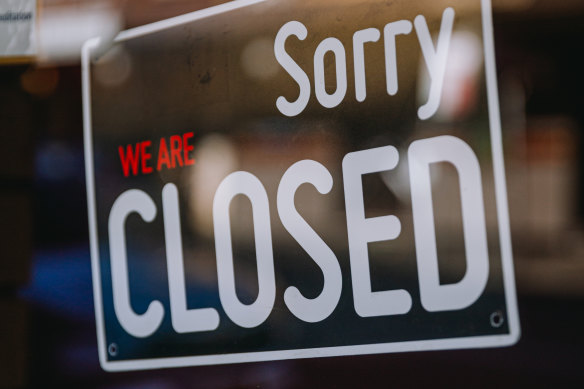
Job vacancies peaked at 475,400 in the May quarter of 2022. At the time, the national workforce was 14 million people.
Since then, the workforce has grown by 830,000 to almost 14.9 million while the number of vacancies has fallen by 23 per cent to 363,800.
The proportion of businesses with vacancies has fallen by 27.3 per cent in late 2022 to 18.3 per cent. Vacancies are lowest in Queensland and Tasmania while the proportion of NSW firms with vacancies has dropped from almost 29 per cent to 18.5 per cent.
Insolvency figures compiled by the Australian Securities and Investments Commission also show the troubles facing the business sector.
Through the first 7 months of the 2023-24 financial year external administrators were appointed to 6610 businesses – up 36.1 per cent for the same period of last financial year.
On current trends, administrator appointments will be more than 10,000 this year. The last time it was this high was in 2012-13 when businesses, supported by government stimulus through the global financial crisis, started to falter.

More stores are closing and installing administrators as the economy struggles.Credit: Dion Georgopoulos
AMP deputy chief economist Diana Mousina said the figures pointed to the headwinds facing the economy that would ultimately force the Reserve Bank into cutting official interest rates in the second half of this year.
“The data indicates that the weakness in the retail environment has continued into early 2024,” she said.
“While one-off events like sport or concerts can cause a temporary rise in retail spending, it isn’t strong enough to offset the broader pressures on the consumer of high interest rates, elevated (albeit slowing) inflation and the increasing tax burden from bracket creep.”
Loading
Associated economist with Moody’s Analytics, Shannon Nicoll, said taken with this week’s inflation figures, which showed monthly inflation steady for a third consecutive month at 3.4 per cent, the data pointed to a rate cut later this year.
“High borrowing costs are keeping Aussie households from spending with any exuberance. We expect borrowers will get some relief in September,” he said.
Cut through the noise of federal politics with news, views and expert analysis. Subscribers can sign up to our weekly Inside Politics newsletter.



























